Detailed instruction
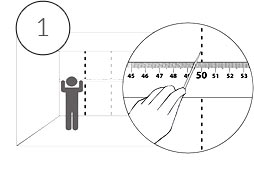
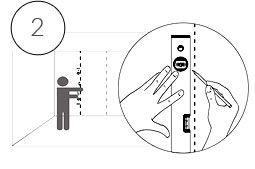
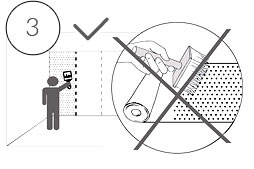
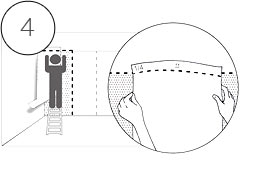
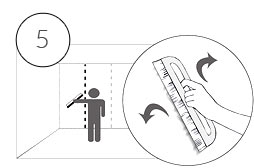
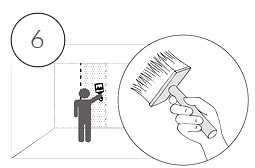
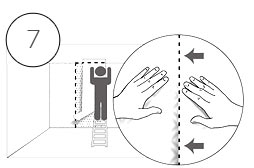
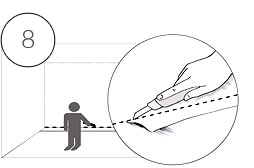
Please prepare:
- Wallpaper glue
- 1 liter of cold water
- Cuvette for the preparation of a glue
- Pencil and paper tape
- Scissors
- Measurement tools (ruler, tape meter ...)
- Spirit level ( you can replace it with a heavy object eg. the scissors suspended on a string)
- Brush for glue
- Brush and roller for a wallpaper
- Utility knife
- A soft sponge or a cloth
Before you start
- Prepare the selected wall. The wall surface should be clean, dry, and free of grease (best results are achieved on a wall covered with a white finishing coat). Non-woven wallpaper masks minor imperfections, but if defects are deep it must be filled before wallpapering. If the wall is in contrasting colors it is recommended to mask them using a bright color. Before applying, please remove any residues of previous wallpaper from the surface of the wall.
- Cut the roll of the wallpaper along the dotted line.
- Unfold the strips in the correct order and check the pattern for any errors and if the edges matches and fits to each other. If you notice a problem, please contact us to replace the roll.
- Prepare the glue. When using Bimago wallpaper glue: Mix one sachet (50g) brawl in 1 liter of cold water and then wait 15 minutes. After 15 minutes, stir the glue again. Now, you can start the application.
Note: Due to the process of glue drying - we don't recommend wallpapering in areas with a very low air humidity and air temperature lower than 10°C. Optimal room temperature during wallpapering and drying is between 18 - 21°C.
Non-woven wallpapers - installation
- Using a spirit level and a ruler on a selected fragment of the wall, mark equal vertical lines every 50 cm along which you will attach strips of the wallpaper.
- If there is a window on a selected wall, for your convenience, start near it, then move towards the wall.
- Apply the prepared glue to the surface of the wall, dedicated to first stripe of a wallpaper (this may be slightly wider area than the width of a stripe). Spread a thin layer of glue using a brush. Be careful that the glue layer is not too thick and that it’s unitary. Do not apply a glue on the wallpaper.
- Take the first stripe of a wallpaper. Make sure where the top is and that you are starting from the right roll. Roll it up starting from the bottom (with the pattern inside) or just gently fold it over to avoid dirtying the surface of a wallpaper.
- Place the upper part of the stripe in the right place and at the right height to an adhesive coated fragment of the wall. Then gently expand the stripe, sticking it on the entire length.
- Check whether the first stripe is placed equally along the designated lines. If not, gently slide the stripe to the correct position.
- Using a brush, carefully smooth the surface of the wallpaper, removing inequalities and air bubbles. Move the brush in a circular motion from the center of a stripe to the side, starting from the upper surface. Be careful - do not get the brush dirty of the glue.
- Repeat these steps for the next stripes of the wallpaper. Please note that the edges of the pattern should be equally matched.
- Excess glue can be removed with a soft, dampened sponge or cloth. Be careful - rubbing the surface of a wallpaper with a dry sponge to hard may lead to the destruction of a print.
- When you’re finished sticking and the stripes are smoothed with a brush, cut off all redundant parts of a wallpaper using a utility knife (including white edges). Please make sure that the knife is clean and sharp. Using dull utility knife can cause damage to the wallpaper.
After sticking
- Once again, make sure the wallpaper adheres to the wall over the entire surface, that the stripes were applied equally, and that the pattern hasn't been deformed. The best evaluation can be performed from the distance about 1-2 meters. If you will notice that pattern is shifted (recently after sticking a wallpaper) you can gently move a stripe on a wall to align it.
- Using a paint roller, please smooth the surface of a wallpaper once again. There might still be some small air bubbles left under the wallpaper that you can’t remove, but they should disappear within 1-3 days.
- Remember to keep a temperature above 10°C and a constant supply of air to the room.
- Please, do not try to "help" a wallpaper’s natural drying process. Do not use any device which could accelerate it. If possible, please avoid an intense heating, especially if a wallpaper was applied near heating devices.